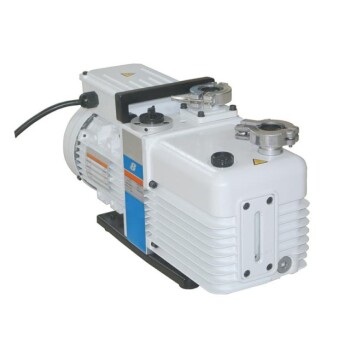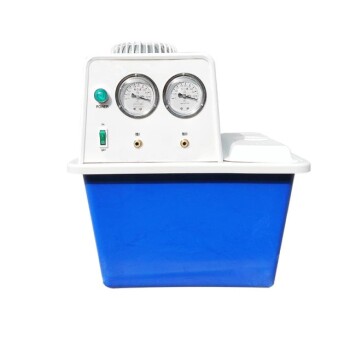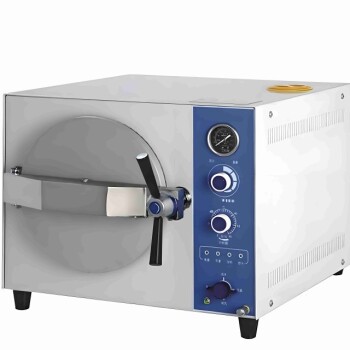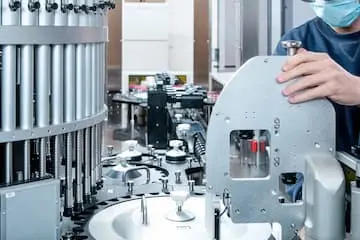A laboratory vacuum pump is a versatile tool that is commonly used in research labs to provide suction for the filtration or aspiration of samples and to reduce vapor pressure in instruments such as rotary evaporators and lab ovens. It can also help improve instrument-detection sensitivity and collect gas samples from test chambers or the atmosphere. When choosing a laboratory vacuum pump, it is important to determine the required vacuum level and consider factors such as pump type and application. It is worth noting that lab vacuum pumps are designed to move air or vapors and not to directly pump liquids or suspensions.
Toggle Categories
Get Instant Support
Choose your preferred way to connect with our team
-
Get Free Quote Fill out form for detailed pricing
-
Send Email Detailed inquiry support
-
WhatsApp Quick mobile chat
Response Time
Within 8 hours on working days, 24 hours on holidays
laboratory vacuum pump

Benchtop Laboratory Vacuum Freeze Dryer
Item Number : KTFD-10S

Laboratory Rotary Vane Vacuum Pump for Lab Use
Item Number : VRD

Laboratory Benchtop Water Circulating Vacuum Pump for Lab Use
Item Number : KV-2

Laboratory Sterilizer Lab Autoclave Pulse Vacuum Lifting Sterilizer
Item Number : KT-Q02

Laboratory Sterilizer Lab Autoclave Pulsating Vacuum Desktop Steam Sterilizer
Item Number : KT-B01
We have the best Laboratory Vacuum Pump solutions to meet your needs. Our oil-free vacuum pumps are perfect for aspirating water from bottles or pulling media out of cell cultures. They provide high power vacuum suction to decrease process filtration times, with high flow rates to increase pumping speeds and reduce operation times. Our vacuum pumps are designed to be light weight and easily transferred between workstations, safety hoods, and chemical fume hoods found in many laboratory spaces. With advanced engineering and complex designs, our vacuum pumps are built to withstand years of extensive laboratory work.
Applications of Laboratory Vacuum Pump
- Collecting gas samples for atmospheric or test chamber analysis
- Moving aspiration or filtration of suspended samples or liquid
- Improving instrument-detection sensitivity by evaluating air molecules
- Controlling or inducing solution evaporation by reducing vapor pressure in concentrators, rotary evaporators, ovens, gel dryers, etc.
These applications showcase the versatility of laboratory vacuum pumps. Different types of vacuum pumps, such as diaphragm, rotary vane, scroll, and combination pumps, are designed to cater to specific laboratory needs. Diaphragm vacuum pumps are suitable for functions like liquid degassing, filtration, and backing pumps, while rotary vane vacuum pumps are commonly used for the reduction of dry gas or continuous suction. Scroll vacuum pumps are dry pumps that require less maintenance and operate with less noise. Combination vacuum pumps are a combination of rotary vane and diaphragm vacuum pumps, making them ideal for heavy-duty activities that involve harsh chemicals.
Advantages of Laboratory Vacuum Pump
- Laboratory vacuum pump is a versatile tool that can aid in a wide variety of research projects.
- It can provide suction to drive the aspiration or filtration of liquid or suspended samples.
- It can induce or control solvent evaporation by reducing vapor pressure, as in ovens, rotary evaporators, gel dryers, and concentrators.
- It can improve instrument-detection sensitivity by evaluating air molecules that might obscure or contaminate samples, as in a mass spectrometer.
- It can collect gas samples from test chambers or the atmosphere.
- It provides a negative pressure environment to prevent escape of potentially hazardous sample materials.
- Laboratory vacuum pumps are designed to move air or vapors, and not to directly pump liquids or suspensions.
- It is an essential tool in many scientific fields, including chemistry and life sciences.
- High-value mass spectrometer units incorporate vacuum pumps that are at the vanguard of the vacuum industry in terms of automation, control, compactness, effectiveness, efficiency, quiet operation, and low-maintenance.
- Proper maintenance of laboratory vacuum pumps, such as fluid changes and air flushes, can help extend their lifespan and prevent costly failures.
Our Laboratory Vacuum Pump is the perfect solution for your laboratory needs. Not only is it cost-effective, but it also offers a complete customisation service. Our vacuum pumps are designed to be efficient, lightweight, and easily transferable between workstations. They can support high flow rates, increase pumping speeds, and reduce operation times. Our vacuum pumps can handle many applications, including vacuum filtration, impregnation, drying chambers, rotary evaporators, distillation, gel dryers and gas analytical systems. With advanced engineering and complex designs, these vacuum pumps are built to withstand years of extensive laboratory work.
FAQ
What Is Laboratory Vacuum Pump?
What Is The Purpose Of Vacuum Pump In Laboratory?
What Is The Use Of Pump In Laboratory?
What Is Used In A Laboratory To Form And Contain A Vacuum?
How Does A Laboratory Vacuum Pump Work?
REQUEST A QUOTE
Our professional team will reply to you within one business day. Please feel free to contact us!
Related Articles

Risk-Proof Your Lab: How to Choose a Vacuum Pump That Avoids Costly Failures
Learn how to choose reliable lab vacuum pumps to avoid costly failures. Assess chemical risks, throughput needs & safety for optimal performance.

How to Select the Right Oil-Free Diaphragm Pump for Your Lab or Industrial Needs
Learn how to choose the right oil-free diaphragm pump for your lab or industry—balancing specs, chemical resistance, and lifetime costs.

How to Choose Laboratory Vacuum Pumps for Maximum Efficiency and Cost Savings
Learn how to choose the right lab vacuum pump for efficiency & cost savings. Compare oil-sealed vs. oil-free pumps & future-proof your investment.

How to Choose and Optimize Water Circulating Vacuum Pumps for Your Lab
Learn how to choose and optimize water circulating vacuum pumps for lab applications, balancing efficiency and reliability.

Water Circulating Vacuum Pumps: A Practical Guide for Laboratory Applications
Discover the benefits of water circulating vacuum pumps for labs: chemical safety, low maintenance, and explosion-proof operation. Ideal for sensitive applications.

How Vacuum Induction Melting Prevents Catastrophic Material Failures in Critical Components
Discover how Vacuum Induction Melting (VIM) prevents material failures in aerospace, nuclear, and EV components by eliminating atomic-level contamination.

Why Freeze-Drying is Indispensable for Preserving Sensitive Samples
Freeze-drying preserves sensitive samples by sublimation, maintaining molecular integrity and enabling stable, room-temperature storage. Essential for proteins, vaccines, and volatile compounds.

How Laboratory Freeze Dryers Outperform Alternatives in Pharma, Food, Biotech & Research
Discover how lab freeze dryers outperform traditional methods in pharma, food, biotech & research—preserving potency, nutrients & integrity.

Beyond the Spec Sheet: Matching Freeze Dryer Capabilities to Your Application's Critical Needs
Choose the right freeze dryer for pharma, food, or biotech. Key specs like cold trap temp, vacuum, and cooling rate impact drying speed and product quality.

Comprehensive Overview of Vacuum Evaporation Systems
An in-depth look at vacuum evaporation systems, their principles, components, and applications.

Understanding Cold Traps in Lyophilizers: Key Factors and Evaluation Methods
Explores the role, evaluation, and common misconceptions of cold traps in lyophilizers, emphasizing the importance of water capture efficiency.

Understanding the Functionality of Cryogenic Cold Traps
An in-depth look at how cryogenic cold traps operate and their applications in various fields.

Applications of Dry Cold Traps in Various Processes
Dry cold traps are used in multiple applications to condense and collect gases, protecting equipment and improving process efficiency.

Optimal Cold Trap Temperature in Freeze Drying: Balancing Efficiency and Performance
Exploring the impact of cold trap temperature on freeze-drying efficiency and equipment performance.

Cold Trap Design and Water Vapor Transport in Lyophilization
An overview of cold trap design and its impact on water vapor transport and product quality in the lyophilization process.

Comprehensive Guide to Rotary Vane Vacuum Pumps
An in-depth analysis of the structure, working principle, applications, and advantages of rotary vane vacuum pumps.

Common Pumps Used in Ultrahigh Vacuum Systems
An overview of the primary types of pumps utilized in ultrahigh vacuum systems, including mechanical, turbomolecular, sputtering ion, titanium sublimation, and cryogenic pumps.

Choosing the Right Laboratory Vacuum Pump
Guide on selecting appropriate vacuum pumps for various laboratory applications, considering types, uses, and vacuum degree calculations.

Advantages of Laboratory Circulating Water Vacuum Pumps
Explores the benefits of using laboratory circulating water vacuum pumps over traditional methods.

Lessons Learned from a Laboratory Vacuum Pump Oil Change Fire Incident
A detailed account of a fire incident during a vacuum pump oil change, highlighting the importance of proper maintenance and safety procedures.
